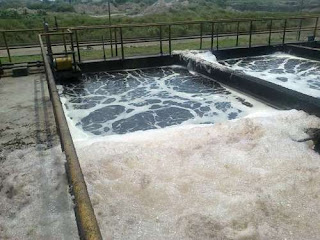Defoamers Market: High Technical Experience and Expertise Helps Large Players Remain at Forefront, TMR
The global defoamers market is a highly fragmented arena. Some of the leading companies operating in the market are Dow Corning Corporation, Ashland Inc., Kemira Oyj, Bluestar Silicones, and Air Products and Chemicals Inc. Transparency Market Research (TMR) observes that the majority of these players in the market are large chemical companies with dedicated manufacturing technologies along with experience and expertise.
The high technical acumen of these players along with large capital requirement to venture into this market is creating a high entry barrier for new players. “However, a large number of end users is making the global defoamers market highly lucrative for new players,” says TMR’s lead analyst. The global defoamers market was valued at US$3.00 bn in 2016 and is expected to rise to US$4.10 bn by 2023, progressing at a CAGR of 4.5% from 2015 to 2023.
Obtain Report Details @ http://www.transparencymarketresearch.com/defoamers-market.html
Silicone-based Defoamers to Lead Revenue Generation through 2023
On the basis of application, silicone-based defoamers will continue to dominate the market until the end of 2023, accounting for 44.9% of the overall market revenue. Water-based defoamers, on the other hand, will rise at a CAGR higher than any other segment during the review period. The growth of the segment can be attributed to the rising demand from the paints and coatings industry.
Based on geography, Asia Pacific will continue to be the frontrunner in the global arena until 2023. The growth of the region can be attributed to the spiraling demand for defoamers in countries such as India, China, and Japan. The increasing demand from end-use sectors such as the food and beverages and paper and pulp is also contributing to the growth of the region. Owing to these factors, APAC is estimated to exhibit a CAGR of 4.9% during the same period.
High Demand from Paper and Pulp Industry Fuels Growth Prospects
The significant growth of the pulp and paper industry worldwide is positively impacting the global defoamers market. “Defoamers are being increasingly acknowledged as they help in lowering problems such as foam formation, bacteria development, drainage issues, and paper breaking,” says a TMR analyst. In addition, the robust growth of the global water and wastewater treatment industry augmenting the market.
Fill the form for an exclusive sample of this report @ http://www.transparencymarketresearch.com/sample/sample.php?flag=S&rep_id=545
The rising demand for paints and coatings is also working in favor of the global defoamers market. Stringent environmental regulations are leading to the replacement of solvent-based systems with waterborne coating systems. The increased amount of special surfactants used in waterborne coatings results in excessive foam formation, which creates a pressing need for higher efficient defoamers. Moreover, the growing demand for antifoaming agents in the food and beverage industry is stoking the growth of the global market.
However, the health and safety risks posed by the additives used in defoamers are prompting regulatory bodies to take measures regarding their usage. Application of defoamers in food and drugs is listed in the Code of Federal Regulations (CFR) under the U.S. government regulations. The imposition of stringent regulations is hampering the growth of the market. On the other hand, the increasing demand for defoamers in Asia Pacific, owing to the flourishing growth of end-user industries, is creating lucrative opportunities for players in the global market.
The defoamers market has been segmented as follows:
Global Defoamers Market, by Product
- Water-based Defoamers
- Oil-based Defoamers
- Silicone-based Defoamers
- Others (Including EO/PO-based Defoamers, etc.)
Global Defoamers Market, by Application
- Pulp & Paper
- Water Treatment
- Paints & Coatings
- Food & Beverages
- Others (Including Pharmaceuticals, Mining, Printing, Agricultural Chemicals, etc.)
The above data is collated from a research report released by TMR, titled “Defoamers Market - Global Industry Analysis, Size, Share, Growth, Trends and Forecast 2015-2023.”

Comments
Post a Comment